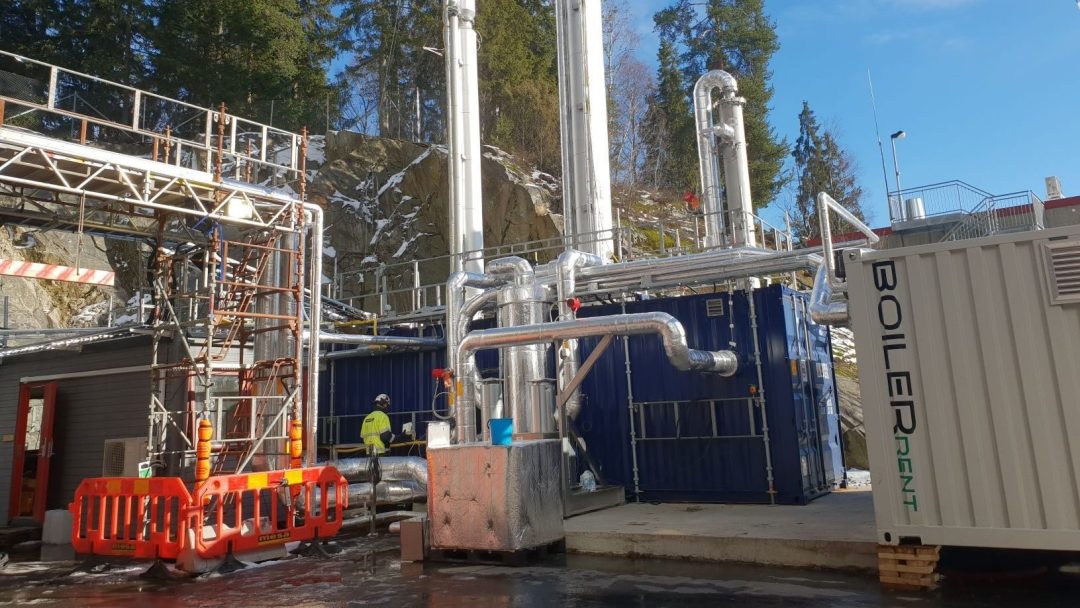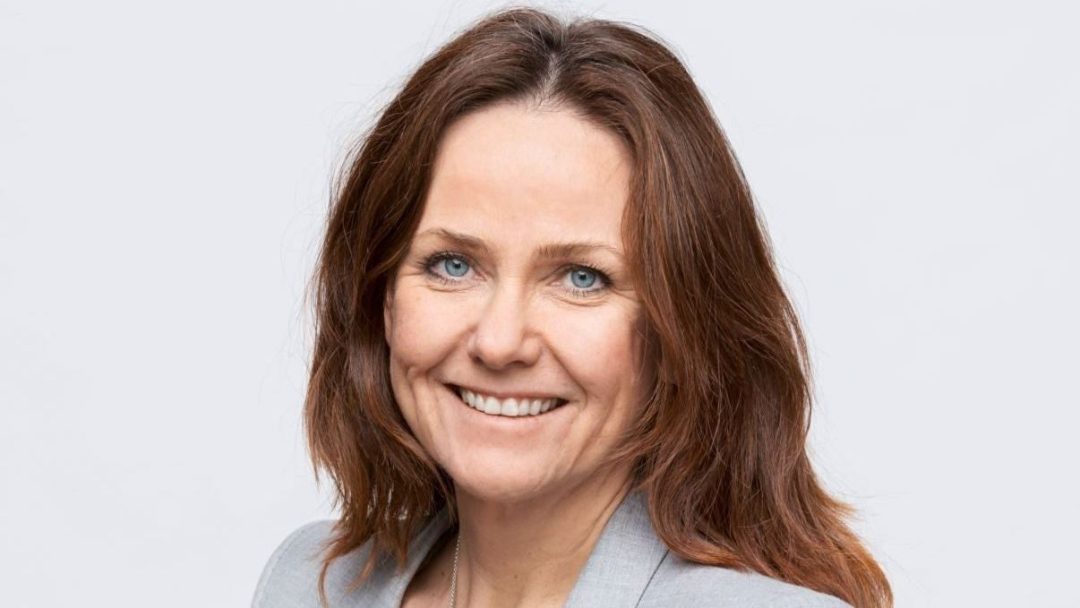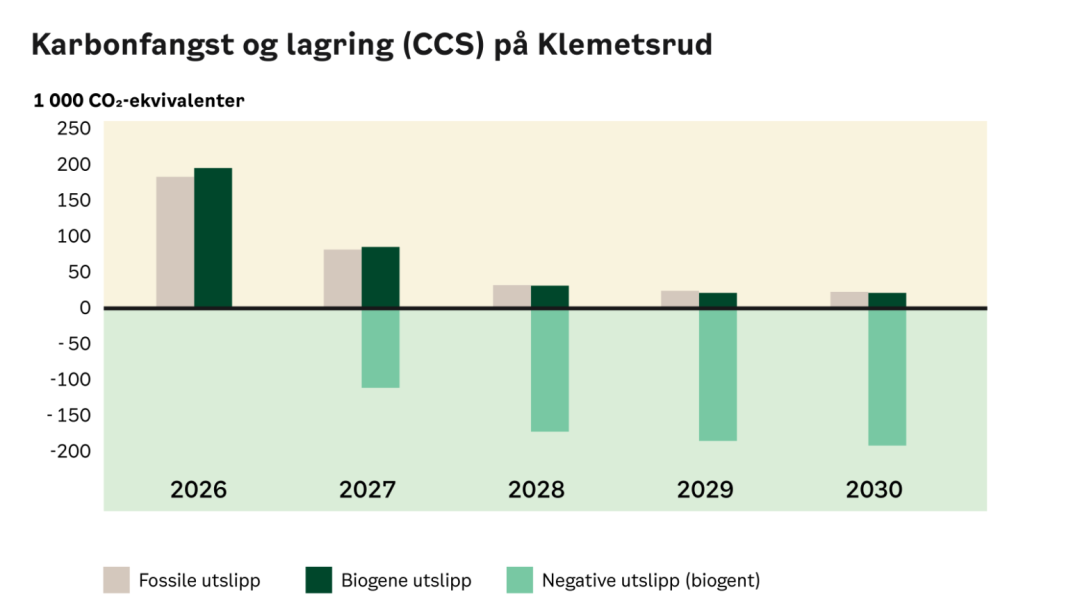Size: large
Type: image
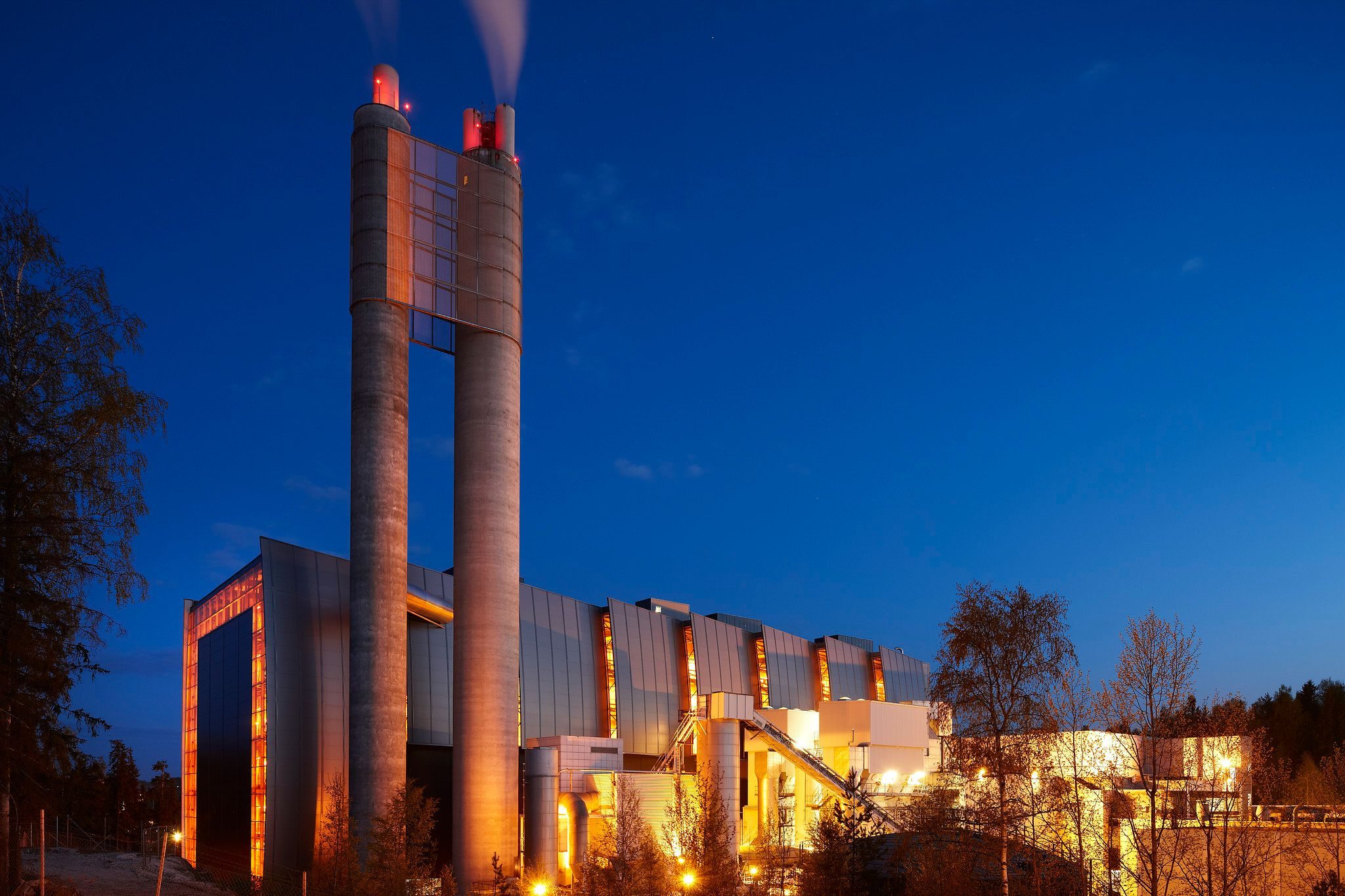
If you drive south out of Oslo, you can see a glimpse of the tall chimneys with smoke coming out. They stand there as a landmark and could become a symbol of new climate-friendly technology.
This is the waste-to-energy plant at Klemetsrud and is where the carbon capture and storage (CCS) have been tested. Carbon capture involves extracting CO₂ from the gas which is released when burning waste. This technology will be crucial for Oslo to achieve its goal of reducing greenhouse gas emissions by 95% by 2030.
Klemetsrud is one of the two places in Oslo where waste is incinerated, the other being Haraldrud. Burning waste is the most environmentally friendly method for handling waste that cannot be recycled or reused. It removes pollutants from the cycle, and the excess heat from incineration is used for district heating and electricity production for Oslo’s population.
When we burn waste, CO₂ is released because most of the waste being burned is plastic. Since plastic is made from oil, greenhouse gases will be released into the air in the same way as when we burn gasoline or diesel. Therefore, CCS is a crucial technology for removing greenhouse gas emissions during waste treatment, not only here in Oslo but worldwide.
What is CCS?
In short, CCS (carbon capture and storage) is a new technology that captures or removes CO₂ from the smoke emitted during waste incineration. This has been tested at Klemetsrud in a pilot project.
Klemetsrud is part of the Langskip project, which is a national project for capturing and storing CO₂. Once the greenhouse gas is captured and liquefied, it will be transported by ship to Øygarden on the west coast of Norway. From there, it will be pumped through pipelines to the bottom of the North Sea, where it will be stored in wells several kilometers beneath the seabed.
Both the UN Intergovernmental Panel on Climate Change (IPCC) and the European Union (EU) consider CCS as essential for achieving the global climate goals.
A necessary step towards the climate goal
– For Oslo’s climate goals, it is crucial that the carbon capture facility at Klemetsrud is realized, says Heidi Sørensen, Director of the Climate Agency in Oslo Municipality.
Seventeen percent of Oslo’s direct greenhouse gas emissions come solely from waste incineration at Klemetsrud. Thus, the waste-to-energy plant at Klemetsrud is the single largest greenhouse gas emitter in the city.
CCS (carbon capture and storage) is a milestone in Oslo’s climate efforts and represents a significant step towards achieving the 2030 climate goal.
Carbon capture at Klemetsrud aims to create an emissions-free waste sector. In time, these solutions can be exported to the 450 waste incineration plants across Europe that face similar emission challenges.
In process
In May 2022, the City of Oslo and Oslo Hafslund Celsio made an agreement to finance carbon capture and storage (CCS). The project is set to receive NOK 3 billion in support from the state, if other organizations will finance the remainder cost of the project. Oslo Municipality and Hafslund Oslo Celsio agreed to share the costs between them.
The initial plan then was to have a full-scale carbon capture and storage project at Klemetsrud by 2026. However, in April 2023, Hafslund Oslo Celsio announced a one-year delay due to significant price increases in equipment caused by inflation, global instability, and a weakened Norwegian krone.
Despite this setback, Hafslund Oslo Celsio is still committed to establish the carbon capture facilities at Klemetsrud. Now, Oslo Hafslund Celsio aims to make a decision about the investments by summer 2024.
Why is carbon capture so important?
Around 100 million tons of waste end up in landfills in Europe. Imagine if this waste had been sorted by source and recycled. The waste that couldn’t be recycled would be incinerated in waste-to-energy plants, with smoke purification and carbon capture.
By doing so, Europe could reduce its emissions by 90 million tons per year.
Hafslund Oslo Celsio’s facility in Klemetsrud has the capacity to capture up to 400,000 tons of CO₂ annually, equivalent to the emissions from approximately 200,000 fossil-fuel-powered cars.
What makes the carbon capture and storage project at Klemetsrud unique is that it can be replicated in nearly 500 similar facilities across Europe. Thus, Oslo can demonstrate how other cities can go from having waste landfills to responsible waste management with carbon capture.
Carbon capture will result in negative emissions
Approximately half of the waste in the Klemetsrud waste-to-energy plant consists of biological material that haven’t been sorted as food waste, paper, cardboard, wood or other.
When we capture and store CO₂ from this biological waste, we effectively remove CO₂ from the atmosphere because it has already been absorbed by trees and plants. This process is known as negative emissions, which both the United Nations (UN) and the International Energy Agency consider crucial for achieving global climate goals.
However, with the current method of calculating greenhouse gas emissions, only half of the captured emissions will count as reduction of greenhouse gases. There are mainly two reasons:
- Fossil Rest Waste: there are only emissions from incineration of fossile residual waste that will be considered when we calculate on greenhouse gas emissions. This is waste that contains plastic or other fossile material. About 200.000 ton of CO2 is released every year from fossile waste.
- Biological materials: Incineration of biological material is considered climate neutral because the same amount of CO2 that is released has been removed from the atmosphere. In that way it doesn’t count as emission when calculating on greenhouse gas emissions.
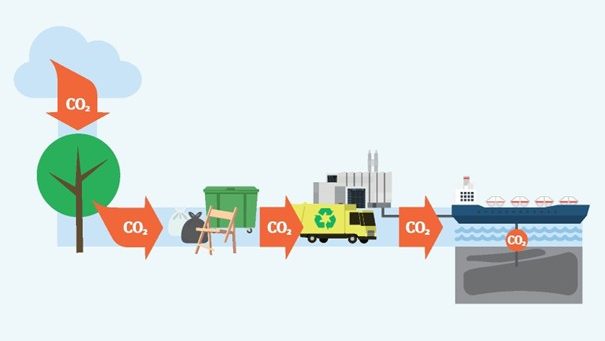
Slik kan Oslos avfallssystem gi negative utslipp. Biologiske materialer inneholder CO2 hentet fra naturens kretsløp. Når de blir til avfall og brennes, kan CO2-molekylene fanges, fraktes til Nordsjøen og lagres under havbunnen. Ill: Redink/Fortum
The need for new rules
Oslo seeks long-term framework conditions that make carbon capture profitable. According to Heidi Sørensen, if Norway had implemented a reverse CO₂ tax, it could be profitable to capture CO₂ from biological materials.
– A reverse CO₂ tax means that the government pays for each ton of non-fossil CO₂ captured and stored, as opposed to the current CO₂ tax where payment is based on fossil CO₂ emissions. Implementing a reverse CO₂ tax, especially in combination with an increased incineration tax, would enhance the profitability of carbon capture facilities and incentivize plastic sorting. This could lead to more carbon capture facilities in Norway and potentially reduce the technology’s costs over time.
